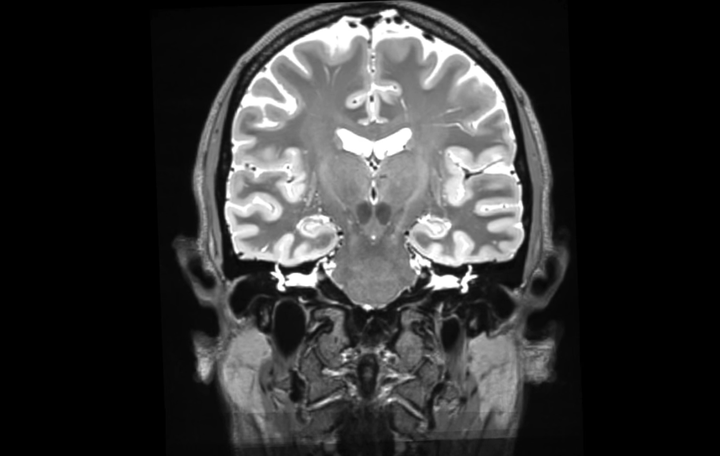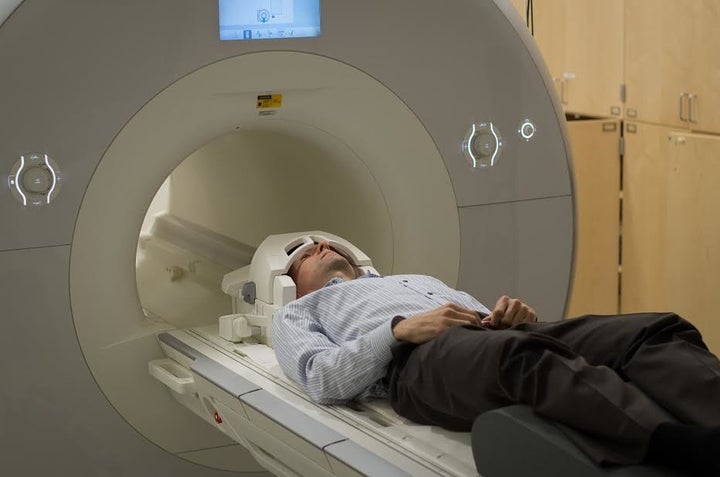
Stanford University neuroscientist Russell Poldrack is the proud owner of the most studied brain in the world.
During an 18-month period, Poldrack underwent a 10-minute fMRI scan every Tuesday and Thursday morning, and took weekly blood samples to analyze gene expression.
"We've never had this amount of data on one person," he told The Huffington Post. "And we've never had data over such a long time course for a single person."
His results, which were published last week in the journal Nature Communications, shed light both on the workings of his individual brain and the organ more generally, as well as how it changes over time.
His most surprising finding? The brain may completely reorganize itself when it's running low on caffeine.
Mapping the brain's connections
Poldrack's mission was to better understand the brain's "connectome" -- the multitude of connections that allow different regions of the brain to communicate.
While previous connectome maps have relied on compilations of snapshots from different brains to create a general picture of how different brain areas connected to form networks, Poldrack's map was the first to track a single brain over time.
The collection of fMRI scans revealed which regions of Poldrack's brain were "talking" to each other, and how much their communications changed over time. Putting the data together yielded the most detailed map of brain connections ever created.
Poldrack and his colleagues identified 630 regions and 13 networks in his brain -- numbers that Poldrack said probably vary by individual.
Understanding these networks of connectivity is important because their workings can have a significant impact on the way we behave.
What he found
Poldrack's connectome remained fairly consistent over the course of the 18 months. However, he did observe some changes that had never before been documented by neuroscientists.
Surprisingly, the biggest factor affecting brain connectivity was whether Poldrack drunk his morning coffee. When he hadn't had caffeine, the parts of his brain involved in basic functions such as vision and movement showed more connectivity, while other regions showed less connectivity.
"The really interesting thing that we weren't expecting was that there were some systems in my brain that were more strongly connected and that totally reorganized their connectivity when I was off coffee compared to when I was on coffee," Poldrack said. "This showed that coffee systematically changed the organization of my brain."

The findings also revealed some intriguing brain-body connections, as the DNA analysis suggested a strong link between changes in brain function and changes in how genes express themselves, although more research is needed to draw solid conclusions.
"There are a ton of relationships between brain connectivity and gene expression in the blood, that are clearly there and seem to be strong, but we just don't have a way to understand them based on current neuroscience," Poldrack said.
More broadly, the experiment shows that long-term brain analysis could be a useful tool for neuroscientists, insofar as they might be able to shed light on the brain changes that occur over the course of weeks or months in individual cases of disorders like schizophrenia or bipolar disorder.
Poldrack has made his entire data set publicly available for scientists who want to dive into the raw material and uncover new connections.
"The amount of variability in time that you see in people who have those illnesses tells us that we really need to be looking not at just them in one snapshot, but at them over the course of an entire fluctuation," Poldrack said. "These data show that we can do that."
CORRECTION: A previous version of this story stated incorrectly that parts of Poldrack's brain involved in functions such as vision and movement showed less connectivity when he was off coffee, which in fact they show more.
Also on HuffPost:

